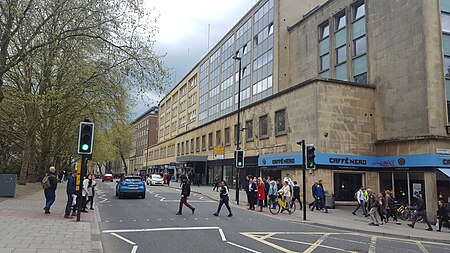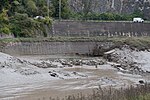Wine Street, Bristol
History of BristolStreets in BristolUse British English from May 2018

Wine Street, together with High Street, Broad Street and Corn Street, is one of the four cross streets which met at the Bristol High Cross, the heart of Bristol, England when it was a walled mediaeval town. From this crossroads Wine Street runs along a level ridge approximately 175m north-eastwards to the top of Union Street.Wine Street was for centuries an important shopping street but, following wartime destruction and the decision to move Bristol's main shopping area to Broadmead, it now contains little notable architecture and acts as barrier between the Old City and Castle Park. Bristol City Council are now seeking to repair this by redeveloping the area.
Excerpt from the Wikipedia article Wine Street, Bristol (License: CC BY-SA 3.0, Authors, Images).Wine Street, Bristol
Wine Street, Bristol Broadmead
Geographical coordinates (GPS) Address Nearby Places Show on map
Geographical coordinates (GPS)
| Latitude | Longitude |
|---|---|
| N 51.4554 ° | E -2.5917 ° |
Address
Wine Street
Wine Street
BS1 2BQ Bristol, Broadmead
England, United Kingdom
Open on Google Maps







